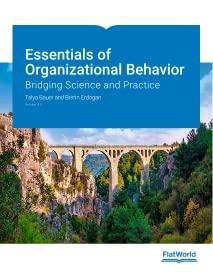Answered step by step
Verified Expert Solution
Question
1 Approved Answer
In 1997, Jeff Bezos, Amazon's founder and CEO, began his first letter to shareholders with this sentence: Amazon.com passed many milestones in 1997: by

In 1997, Jeff Bezos, Amazon's founder and CEO, began his first letter to shareholders with this sentence: "Amazon.com passed many milestones in 1997: by year-end, we had served more than 1.5 million customers, yielding 838 percent revenue growth to $147.8 million, and extended our market leadership despite aggressive competitive entry." Bezos also shared that Amazon had grown from 158 to 614 employees and from one distribution warehouse in Seattle to a second in New Castle, Delaware. At the beginning of 2020, Amazon had grown to $280.5 billion in annual revenues, 156 million Amazon Prime customers, 798,000 employees, and 170 distribution centers with another 62 already planned for the immediate future. Bezos's 1997 letter also made clear the importance of human resource management. He wrote, "We know our suc- cess will be largely affected by our ability to attract and retain a motivated employee base, each of whom must think like, and therefore must actually be, an owner." Over the years, Bezos doubled down on the importance of HR, saying, "I'd rather interview 50 people and not hire anyone than hire the wrong person.... Every time we hire someone, he or she should raise the bar for the next hire, so that the overall talent pool is always improving.... Setting the bar high in our ap- proach to hiring has been, and always will continue to be, the single most important element of Amazon.com's success." While Amazon has grown faster than any other company in the last decade, that expansion combined with a com- petitive job market left the company with 30,000 unfilled jobs in the last quarter of 2019. And that was before the coro- navirus pandemic hit in Spring 2020, at which point Amazon needed to hire 175,000 people as billions around the world sheltering in place turned to Amazon and other online stores to deliver everything they needed to their front doors. But how do you hire that many people that quickly and still do a good job of selecting the best applicants, consistent with Bezos's aspirational hiring philosophy to raise the overall talent level with each hire? One thing you cannot do is simply hire the next warm body that walks through the door. How do you find that many highly qualified applicants? Well, that's up to Amazon's recruiters who make the first judgment call on every applicant. Broadly, what should Amazon's recruiters look for? Experience? Knowledge, skills, and ability? If so, what kind? Cul- tural fit? What would that mean? How would we know when an applicant "fits"? And then there's the practical matter of sorting through the hundreds of thousands of applications received early in the recruitment process. That's an enor- mous challenge. What's the best way to do that? Second, Amazon needs an interviewing process that managers are comfortable with, that is efficient (for handling so many applicants), and that does a better job of screening and selecting candidates than traditional interviews that, when done poorly in most organizations, are barely better than chance at selecting the best job applicants. Unfortu- nately, most managers jump to conclusions and make up their minds about job candidates within the first two minutes of the interview. They look for information that disqualifies applicants, giving much more weight to negative informa- tion because the initial goal is to screen people out. Interviews can be unreliable when interviewers are inconsistent across interviews, making it difficult to compare one job applicant's interview to another's. How can we address those problems to improve Amazon's interviewing processes and decisions, all while handling so many applicants and raising the bar with each new hire? Finally, once you've hired all those new people, they will need to be trained, not only for their current jobs but also for the next one or two jobs in the career paths they choose at Amazon. What training "puzzle pieces" would you need to assemble to advance the skills of Amazon's employees, the person starting in the warehouse with a high school degree, the warehouse employee wanting to develop more technical skills, the technical person without a software engineering degree who wants to learn to build software, and the more advanced geeks with software engineering experience who need to learn artificial intelligence and the massive Amazon Web Services cloud platform, the largest in the world? If Amazon's CEO Jeff Bezos put you in charge of human resources, what would you do?
Step by Step Solution
★★★★★
3.39 Rating (152 Votes )
There are 3 Steps involved in it
Step: 1
If I were put in charge of human resources at Amazon by CEO Jeff Bezos I would focus on several key areas to address the challenges the company faces in recruiting interviewing and training a vast num...
Get Instant Access to Expert-Tailored Solutions
See step-by-step solutions with expert insights and AI powered tools for academic success
Step: 2

Step: 3

Ace Your Homework with AI
Get the answers you need in no time with our AI-driven, step-by-step assistance
Get Started


